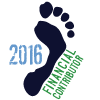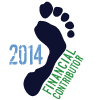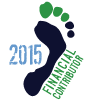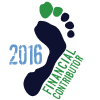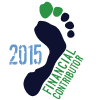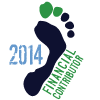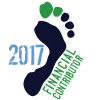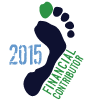You are using an out of date browser. It may not display this or other websites correctly.
You should upgrade or use an alternative browser.
You should upgrade or use an alternative browser.
Stretching..Who Does and Who Doesn't?
- Thread starter Wayne Whiting
- Start date
Darkand
Chapter Presidents
I don't stretch at all any more. I read somewhere that stretching takes the spring out of your run, especially when forefoot striking. That it's ok for heel strikers as they don't have or need any spring. I read the Tarahumara don't stretch at all and that in the days before shoes etc we wouldn't have stretched at all (obviously, lol). So, hey I quit it. I was quite a stretcher too. Believed I needed to.
I've had no issues at all since quitting.
Sorry, not the massively scientific response you were probably looking for but thought I'd let you know my thoughts and why.
I've had no issues at all since quitting.
Sorry, not the massively scientific response you were probably looking for but thought I'd let you know my thoughts and why.
No running specific stretching for me... a few minutes of warmup walking is plenty of stretching to me. I do massage my legs almost everyday but not right after I run usually a few hours go by first. I will do some stretching along with the massaging now and then for tight muscles but that is usually more upper or mid body than legs...I have a desk job and think it causes more problems than exercising.
Again, not a study, but I never stretched, in the 20+ years I have been running...I guess it all depends on each individuals....
I just do a 5' foam roller session if my muscles (calves/adductors) get tense, but that's it
I just do a 5' foam roller session if my muscles (calves/adductors) get tense, but that's it
I'm only a beginner so don't go by me but the only time I ever injured myself exercising was stretching at the gym, so I've always allowed my natural laziness to take over since then. I roll and try to start gently, but I don't stretch as such
I know I asked for studies here and not personal testimonies, but your responses have been fun to read and interesting to see how we all take a different approach to our sport.
Whether you are an elite member of our community or struggling to run 12 minute miles, remember one thing - 95% of the population is still in bed.
Whether you are an elite member of our community or struggling to run 12 minute miles, remember one thing - 95% of the population is still in bed.
ha... only until I come (totally unstretched) running by at sunrise and get their dogs barking like hell!remember one thing - 95% of the population is still in bed.
That's it exactly, experiment, find what does and doesn't work for you, weigh the trade-offs if there are any, but don't project one's own experience as universal and tell others how it's gotta be. For stretching, however it's defined, it's obvious that a lot of people get by just fine without it, and it's just as clear that a lot of us benefit from it.interesting to see how we all take a different approach to our sport.
I think just about everyone agrees you gotta warm-up a bit. For me it can be as little as a block or two, or as much as a mile or two, before everything settles in. Just depends on the day, time of day, biorhythms, alignment of the stars, and so on. And it's especially important for me to warm-up for free weights. I can take as long as 10 minutes pyramiding up to my max weight on the bench press or dead-lift.
As long as anecdotal evidence is now OK, lemme elaborate a bit on my routine, in case it's of interest to someone. Before a run, I do a quick but vigorous roll with my 'stick' on all sides of the lower leg. I then do a quick, light stretch of my hammies, quads, and ITB. Sometimes I also stretch out my feet if they're feeling tight. I sometimes stop in the middle of a run for a more strenuous stretch once I'm good and warmed up, or if my legs are beginning to feel fatigued or strained. I especially like finding a guardrail or wall or something about chest- or head-high and putting my foot up on it. Ahhhhhhh. Hurts so good! This really rejuvenates me. (I used to do martial arts so I'm pretty limber.) After a run, I like to get in a good stretch. If I don't, I tend to stiffen up within an hour or two, especially after a long run or tempo/intervals. At my office, I like to take a break once or twice a day and sit down on the floor spread-eagled with furniture glides and lean forward and towards each foot. Ahhhhhhh. What a rush! This really helps keep me fresh, along with standing from time to time with my sit-stand desk. Lately I've also been using the furniture glides for getting back to doing the splits. At the office or at home, in the middle of the day, I don't warm up or anything before stretching, but I do take it real slow. I also like to do dynamic stretching with ankle weights as part of my free weights routine.
It'd still be interesting if some folks could come up with some credible studies on this, but most scientific studies are bunk, and most popular media interpretations of studies are even worse. The studies simply don't have the proper controls or sample sizes, and the media people usually don't have the proper training to interpret the results, or are under pressure to say something, anything, before any real conclusions can be drawn, or have a hidden agenda, like trend-mongering to draw web traffic to their site or practice. That's why I tend to turn to the pros--what do they do? I know there are a lot of training protocols but if, for example, all elite runners use a mix of run types--aerobic, tempo, hills, intervals--to optimize their performance, then I figure it's probably good for me too, and ignore extreme views: Only HIIT! Only aerobic!
As for Wayne's question about what I do in Minnesota during the winter, I mostly think about living somewhere else, like Denver or Colorado Springs. But I do my best to embrace the elements in the meantime, get out and run, barefoot most of the time if conditions are dry and above 10-20 degrees F.
The problem with most scientific studies is that only the people with an axe to grind know what the parameters need to be, and a) they don't have the money and b) no-one would believe them anyway. So any supposedly 'neutral' studies are generally done by people outside the controversy who choose their parameters for convenience of measurement rather than knowledge of the crucial points of the controversy, and so their results are meaningless to anyone who knows anything about it. So if you found a good, neutral, scientific study of stretching, you would probably find that their definition of 'stretching' was so loose as to include everything everyone has said so far on this thread, or else stretching would be damned because it didnt exclude particular form of ill-thought out stretching that everyone knowledgeable avoids, or something.
studies show that people lie. they tell researchers what they think they want to hear so i read some but don't live my life by them. i'd rather talk or post, with real people who have experimented themselves. i am an experiment of n=1. i take in and try different things to see what works for me.
i roll my legs, glutes, and back on either a baseball or pipe before and after my runs. works good. oh and use my hands on trigger points i can reach.
i roll my legs, glutes, and back on either a baseball or pipe before and after my runs. works good. oh and use my hands on trigger points i can reach.
Sorry, I forgot that you were asking for studies, after seeing everyone else's anecdotes. This article should clear up the matter conclusively.
http://www.sciencedaily.com/releases/2011/02/110218083422.htm
http://www.sciencedaily.com/releases/2011/02/110218083422.htm
So stretching itself neither helps nor hinders, but changing what you do either to or from stretching is likely to injure you. I'm impressed they thought to check that second part.
It would be nice to have a similar study conducted on post-run stretching. That's where I experience the most benefit, in terms of preventing repetitive stress injuries like TOFP and ITBS, after my legs have been wound up by the run. My pre-run stretching routine is quite brief and light. I tend to pay more attention to rolling the lower leg vigorously with 'the stick' pre-run.Sorry, I forgot that you were asking for studies, after seeing everyone else's anecdotes. This article should clear up the matter conclusively.
http://www.sciencedaily.com/releases/2011/02/110218083422.htm
That's it exactly, experiment, find what does and doesn't work for you, weigh the trade-offs if there are any, but don't project one's own experience as universal and tell others how it's gotta be. For stretching, however it's defined, it's obvious that a lot of people get by just fine without it, and it's just as clear that a lot of us benefit from it.
I think just about everyone agrees you gotta warm-up a bit. For me it can be as little as a block or two, or as much as a mile or two, before everything settles in. Just depends on the day, time of day, biorhythms, alignment of the stars, and so on. And it's especially important for me to warm-up for free weights. I can take as long as 10 minutes pyramiding up to my max weight on the bench press or dead-lift.
As long as anecdotal evidence is now OK, lemme elaborate a bit on my routine, in case it's of interest to someone. Before a run, I do a quick but vigorous roll with my 'stick' on all sides of the lower leg. I then do a quick, light stretch of my hammies, quads, and ITB. Sometimes I also stretch out my feet if they're feeling tight. I sometimes stop in the middle of a run for a more strenuous stretch once I'm good and warmed up, or if my legs are beginning to feel fatigued or strained. I especially like finding a guardrail or wall or something about chest- or head-high and putting my foot up on it. Ahhhhhhh. Hurts so good! This really rejuvenates me. (I used to do martial arts so I'm pretty limber.) After a run, I like to get in a good stretch. If I don't, I tend to stiffen up within an hour or two, especially after a long run or tempo/intervals. At my office, I like to take a break once or twice a day and sit down on the floor spread-eagled with furniture glides and lean forward and towards each foot. Ahhhhhhh. What a rush! This really helps keep me fresh, along with standing from time to time with my sit-stand desk. Lately I've also been using the furniture glides for getting back to doing the splits. At the office or at home, in the middle of the day, I don't warm up or anything before stretching, but I do take it real slow. I also like to do dynamic stretching with ankle weights as part of my free weights routine.
It'd still be interesting if some folks could come up with some credible studies on this, but most scientific studies are bunk, and most popular media interpretations of studies are even worse. The studies simply don't have the proper controls or sample sizes, and the media people usually don't have the proper training to interpret the results, or are under pressure to say something, anything, before any real conclusions can be drawn, or have a hidden agenda, like trend-mongering to draw web traffic to their site or practice. That's why I tend to turn to the pros--what do they do? I know there are a lot of training protocols but if, for example, all elite runners use a mix of run types--aerobic, tempo, hills, intervals--to optimize their performance, then I figure it's probably good for me too, and ignore extreme views: Only HIIT! Only aerobic!
As for Wayne's question about what I do in Minnesota during the winter, I mostly think about living somewhere else, like Denver or Colorado Springs. But I do my best to embrace the elements in the meantime, get out and run, barefoot most of the time if conditions are dry and above 10-20 degrees F.
Like Lee said, there are studies and than is the real world. Warmup can be as it is for me, a warmup as you start to run. As for for not stretching, that is how I got hurt. Running barefoot with a flex to your knees can shorten your hams, and your hams are attached to just about everything in your lower body. When I first started running barefoot one of the first articles I read was that only Bozos stretch. I bought into this as my sister and I talked a few years before this about the benefits of stretching. She did not stretch and I did. She has quit running and I am still going. After I stopped stretching I started to get hurt, it toke me a while to figure out why. I had been running for about 30+ years with only the odd injuries due to trying to go to far and going to fast. So what I am saying is that studies are general and not gospel, muscles are like tools,use them properly and take care of them, if you have never stretched, don't do it now, if you have always stretched don't stop.
Another point to consider is: what kind of running do I do? Stretching won't have the same effect (be it good or bad) on people who sprint or train for competitions versus people who run very slowly and exclusively in the aerobic area. (Yes, here it comes again: the M-word  ).
).
Anaerobic training can get the muscles in the condition where they cry out for some stretching, or else they might tighten up and block.
Since the beginning of my purely aerobic MAF-Training I've never felt the need to stretch.
So the runners in the studies: what kind of running do they do generally in their everyday life and specifically during the study?
Anaerobic training can get the muscles in the condition where they cry out for some stretching, or else they might tighten up and block.
Since the beginning of my purely aerobic MAF-Training I've never felt the need to stretch.
So the runners in the studies: what kind of running do they do generally in their everyday life and specifically during the study?
That's an excellent point Hobbit, although, in my experience, it's the long aerobic runs, with their limited ROM, that require the most stretching afterwards. Indeed, for a long time after I got a case of ITBS, I wasn't even able to run at an aerobic pace without having to stop and stretch every mile or two. I found tempo pace much easier on my ITB, and so doing more of that was a key component to ridding myself of ITBS for good. It's only recently that I've been able to run more than five or six miles without stopping to stretch. I'm convinced that more consistent stretching post-run has contributed to my ability to run aerobically and continuously for longer distances.Another point to consider is: what kind of running do I do? Stretching won't have the same effect (be it good or bad) on people who sprint or train for competitions versus people who run very slowly and exclusively in the aerobic area. (Yes, here it comes again: the M-word).
Anaerobic training can get the muscles in the condition where they cry out for some stretching, or else they might tighten up and block.
Since the beginning of my purely aerobic MAF-Training I've never felt the need to stretch.
So the runners in the studies: what kind of running do they do generally in their everyday life and specifically during the study?
i forgot to say that i will stop during my run if needed and work out any trigger points.
NickW
Guest
I will stop and stretch if I need while running. My softball takes care of the rest when I get home.i forgot to say that i will stop during my run if needed and work out any trigger points.



